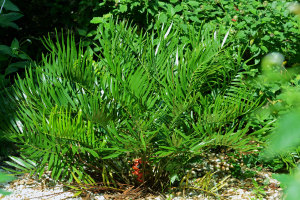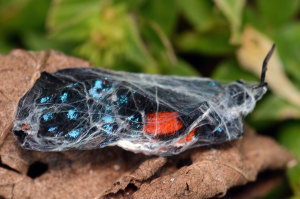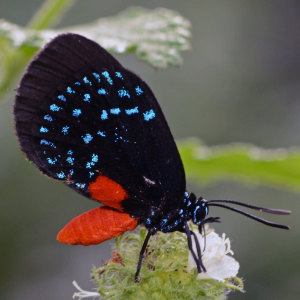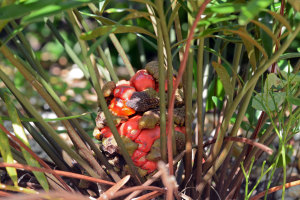It seems that every November the Atalas cruise through my neighborhood. There are supposed to be several broods per year, but each and every documented sighting I have had on my property has been in the month of November. And last December I installed their larval host plant, coontie (Zamia pumila), so they might have a reason to stay:

Of course, not every butterfly that stays is happy to have done so:

Looks to me like the spider got it all wrapped up and then decided that the chemical brew in the butterfly’s body wasn’t too much fun to ingest. I’m not sure, but that’s my working hypothesis. After all, the coontie, a cycad native to Florida, has some nasty chemicals in it to prevent herbivory, but the atala larvae are able to not just neutralize them but use them to their advantage to prevent insectivory! (The cuticle of the larva is apparently “covered with droplets of a bitter-tasting liquid.” How do you suppose the researchers found out what it tasted like?)
In my yard, the coontie plants on which the life cycle of this butterfly depends are located next to several ready nectar sources, chief among them the butterfly attracter par excellence, Cordia globosa, with its small inflorescences present throughout the year. Here’s a shot taken on a windy day:

The bright reddish-orange abdomen and the iridescent blues on the dark black wings are eye-catching, to say the least. An unusual survival strategy in nature, unless, like this butterfly, the flashy insect is advertising not just its presence, but its don’t-mess-with-me inedibility.
The coontie has similar warning signs, with the bright red seeds of the seed cones saying “don’t eat me”:

These warning colors are one way noxious chemicals are signaled to would-be predators or consumers. Wise are they who heed the signs.
If you don’t know the story of the Atala butterfly and its relationship with its host plant, by all means, go read about it.
